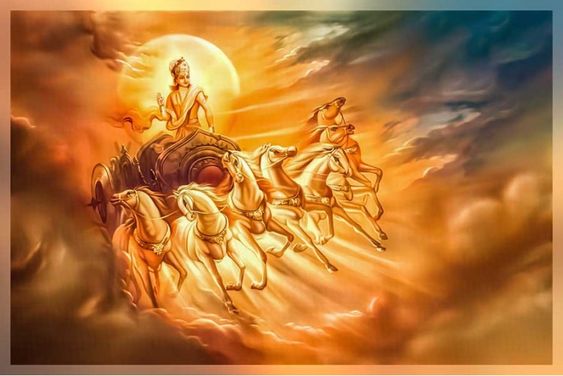Surya, an Indo-European god
Surya, the Hindou Sun god is often depicted riding a chariot harnessed to horses.
Their journey symbolizes the trajectory of the Sun across the sky from dawn till dusk. We find similar representations in Ancient Greece (The god Helios identified with Apollo), in ancient Iran (Mithra), in North Europa (Viking goddess Sol)

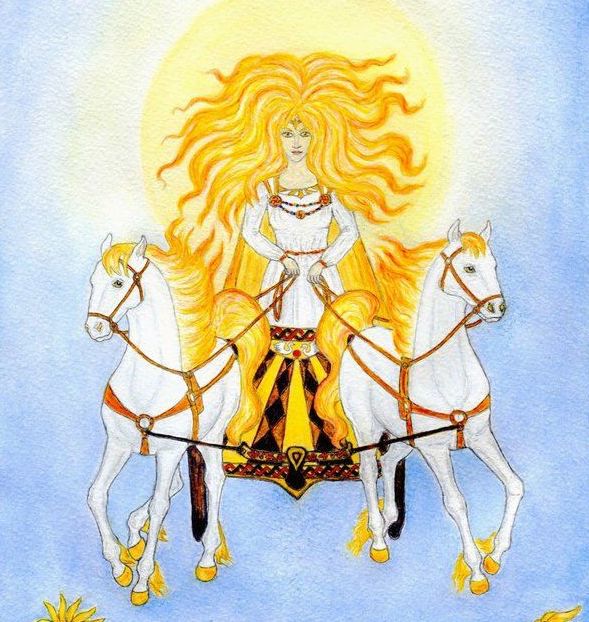
How can we explain these similarities? The answer is that all these gods are Indo-European.
Who are the Indo-Europeans? Linguists in the nineteenth century have noted similarities between languages, ancient and modern, spreading over an immense geographical space (Europe, Russia, India, Asia). This led to the hypothesis that all these languages were connected and had the same origin, the Indo-European. We still have no evidence of this ancient language, no archeological trace of the people who spoke it. But scientists have been able to reconstruct the evolution of this language and class it into subgroups. Other elements have backed up this theory.
- All these nations share similar pantheons. Roman Jupiter is close to Greek Zeus, to Perun, one of our Herojis, and Thor, the Viking god.
- They share similar institutions: family and social structures. Dumezil showed that basically these societies were divided in three classes or functions: the Priests, the Warriors, the Producers.


Surya’s chariot
Like many indo-European Sun gods, Surya is depicted riding a chariot harnessed to horses.
There are however variations from one region to another.
- The Greek and Roman Apollo ride a two-wheeled chariot driven by four white winged horses (white symbolizes the light of the day).
- A sculpture from the Bronze Age found in Denmark shows the Sun who is not yet pictured as a divinity, placed upon a chariot drawn by a horse.
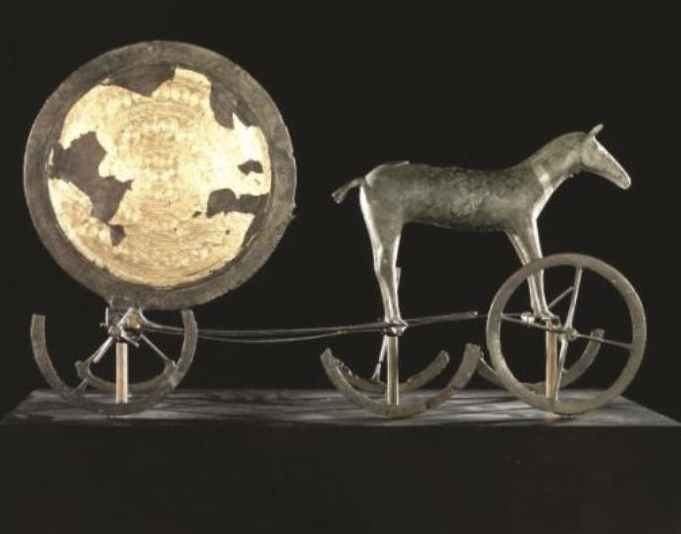
Characteristics of Surya’s chariot: ancient sculptures and paintings show a sort of tiered construction. The god is seated majestically on the upper tier, legs crossed in a lotus position. In the middle tier, we found the goddess of Dawn and in the lower tier, the horses. There are seven of them symbolizing the seven days of the week or the seven colors of the Rainbow. In some pictures, the wheels of the chariot are enormous. Interestingly, the temple of the Sun of Konarak in Orissa is shaped in the form of a chariot and the wheel is a recurring element of decoration. It is a dharma wheel. The circle represents perfection of the dharma, the Buddha’s teachings, the rim of the wheel promotes meditation and concentration, the hub is for moral discipline. This shows by the way the influence of Buddhism on Hinduism.

Chariots in ancient civilizations were mainly used in battle and warfare: this picture shows a representation of an Assyrian war chariot.

This does not seem to be the case in most Indo-European cultures. Greeks valued and relied on the infantry and the Roman aristocracy fought on horseback. Chariots were however a symbol of prestige. The Roman general who was granted a triumph for his victories crossed the city standing on a circular chariot escorted by his cheering soldiers and preceded by the war prisoners covered in chains. In some representations, the winged goddess of Victory stood on the chariot behind the general.
The cosmic journey
The chariot in ancient times was a means of transport. However, Surya crossing the skies does not accomplish an ordinary journey. It is a cosmic journey. He enlightens the world in his passage. This symbolic aspect of the chariot is more universal and not specific to Surya. In many ancient civilizations, initiation to a superior knowledge is seen as a perilous journey from the earthly world to the celestial realms. The chariot or in some instances the boat symbolizes this transformation.
In the Bible, at the end of his life, after accomplishing his earthly missions, the prophet Elijah was taken up to heaven in a chariot of fire drawn by fiery horses. The English poet Blake mentions this chariot and it has inspired the title of a film featuring the epic battle of two athletes torn between the claims of their religion and their ambitions as Olympic champions.
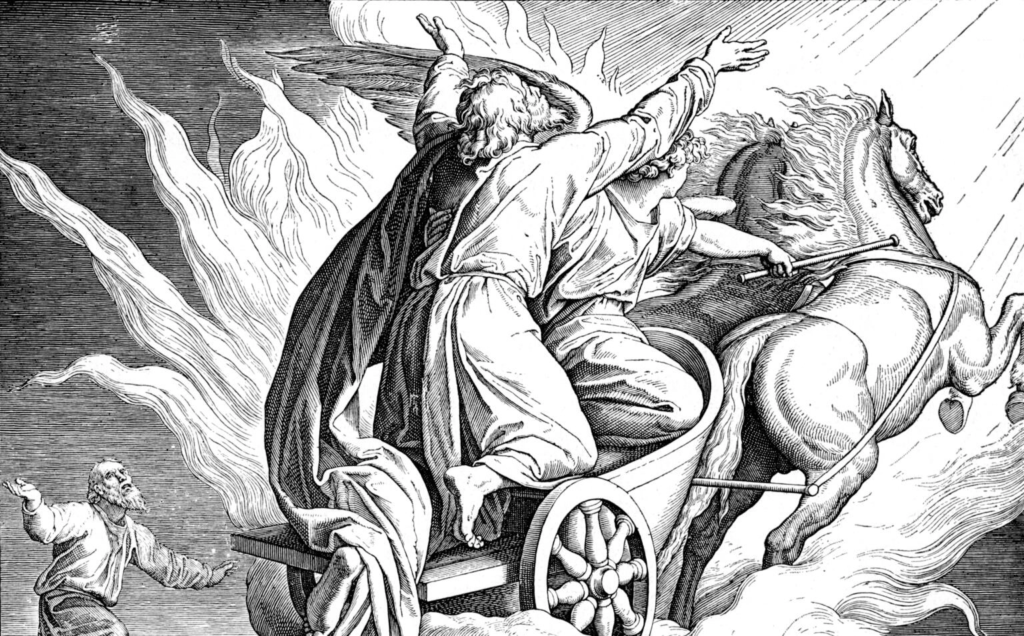
In some areas of ancient China, horses were sacrificed during burial rituals and chariots were buried in tombs. Chariots had come to play an important role in warfare. They accompanied the diseased in their final and most significant journey.
Mastering wild elements
Driving fiery horses across the skies needs the powerful hands of a god. Feeble creatures who tried to vie with the mighty Sun gods were punished for their pride. Phaethon, the son of Helios, begged his father to be allowed to drive the chariot for a single day. His father ended up yielding to his request but the young man was unable to manage the spirited horses. He was finally ejected from the chariot and fell to the ground.

Thus in many cultures, chariot driving became a sign of energy, authority, control, self will. In Buddhism, the body is equated to a chariot where the horses are the senses, the mind is the reins, and the charioteer is the intellect. The passenger is the Self. Greek philosopher Plato compared the soul to a chariot drawn by two horses. The Charioteer is the Reason or intellect who must guide the soul to truth. One of the horses is noble in breed and character and represents our moral and rational impulses. The other horse is wild and untamed and represents passions and base desires. Both horses try to go in a different direction. The charioteer has to master them to proceed towards enlightenment . The tarot of Marseilles is a set of cards used to predict your good or bad fortune. One of the major cards or arcanes is called the Chariot. The Chariot appears to the strong-willed and fearless. Drawing this card indicates that you are driven to succeed, with the will to work hard in order to get what you desire above all else.

It is common in many cultures to compare the state to a chariot. The good ruler knows how to manage his attelage. To quote the Latin poet:
et premere et laxas sciret dare iussus habenas.
In France, Louis XIV built a whole ideology around his identification to Apollo, the Greek sun god. He was called le Roi Soleil. The image of the sun appears everywhere in Versailles. In the gardens, there is a pond with a sculpture of Apollo and his horses. In a picture, the king is represented as Apollo driving the chariot of the Sun thus showing the cosmic nature of his power and his ability to hold the reins of France and Europe.
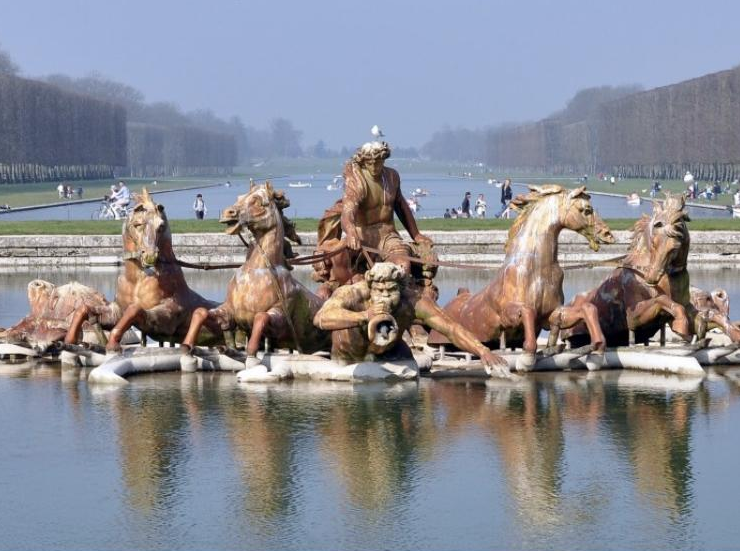
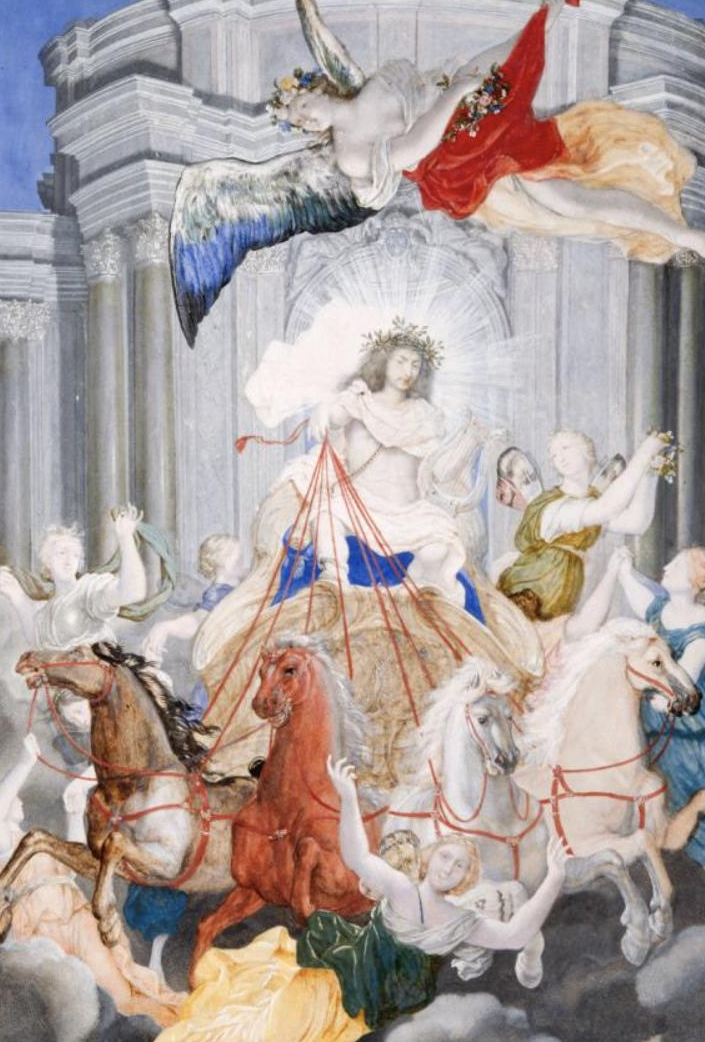
Let us end this cosmic journey with a mantra dedicated to Surya. The English translation is followed by the sanskrit transcription:
Om, Let me meditate on the Sun God, Oh, maker of the day, give me higher intellect, And let Sun God illuminate my mind.
ॐ भास्कराय विद्महे महादुत्याथिकराया धीमहि त नमो आदित्य प्रचोदयात
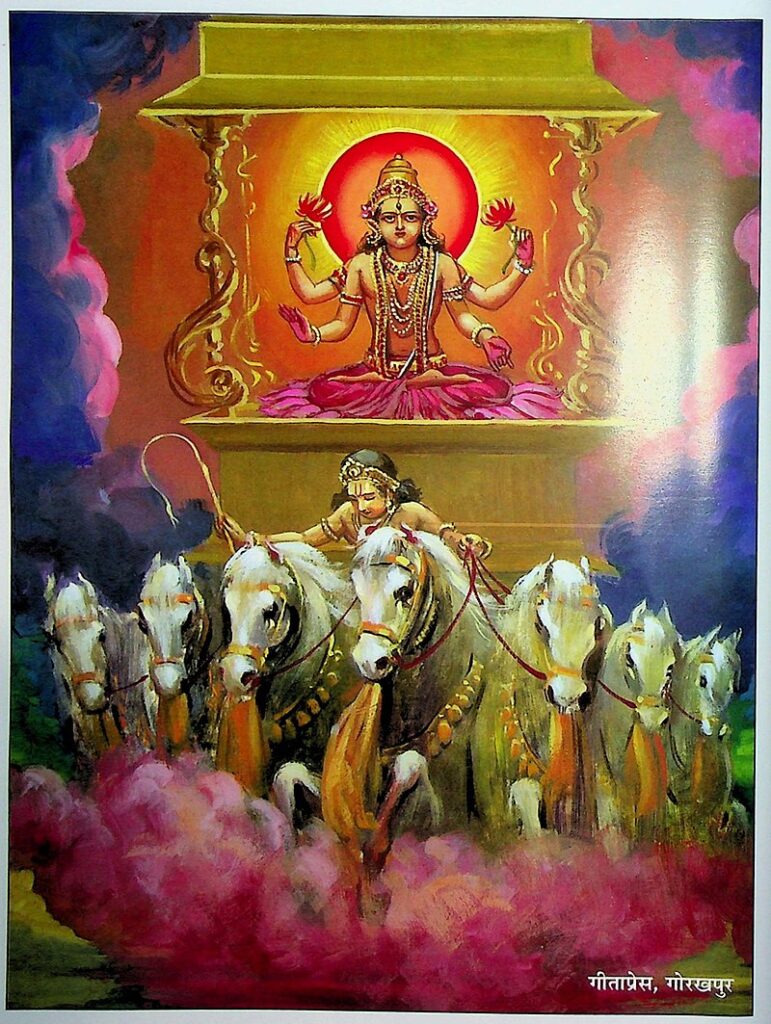
Sources: https://archive.org (Article Char)
Images: reddit.com, wikia.nocookie.net, i.pinimg.com, axl.cefan.ulaval.ca, i0.wp.com, blog.mesindesgalantes.com, opex360.com, worldhistory.org, myjewishlearning.com, wikimedia.org, m.ma-consultation-de-voyance.fr, histoire-image.org.
